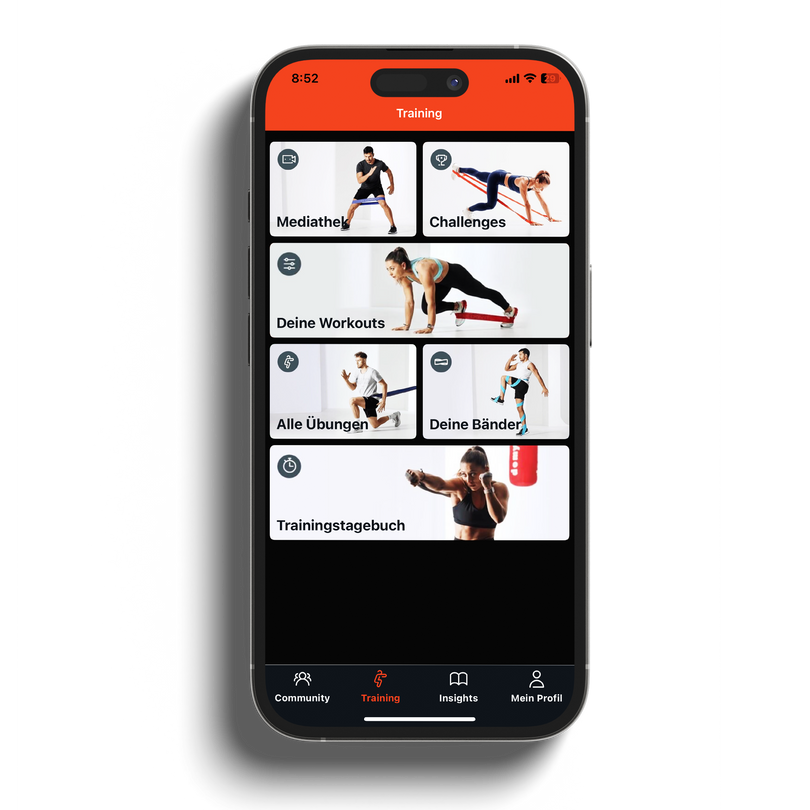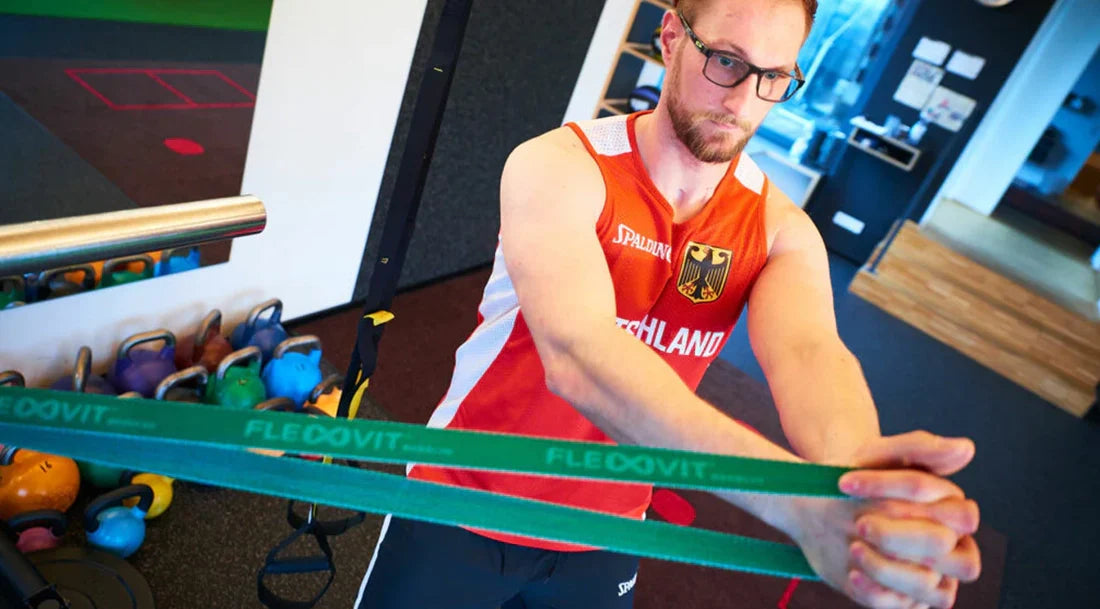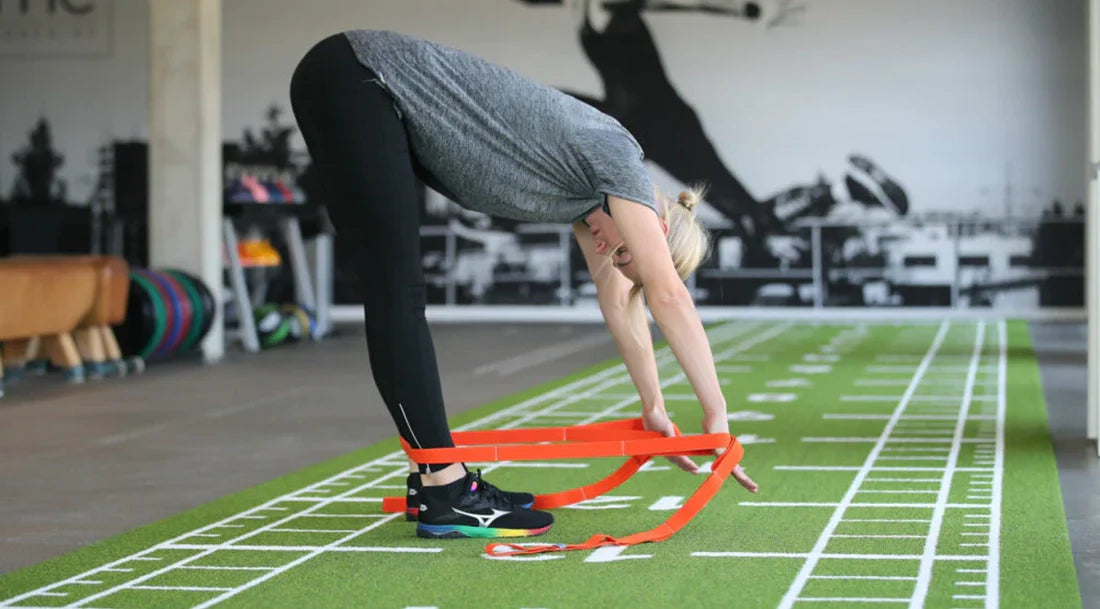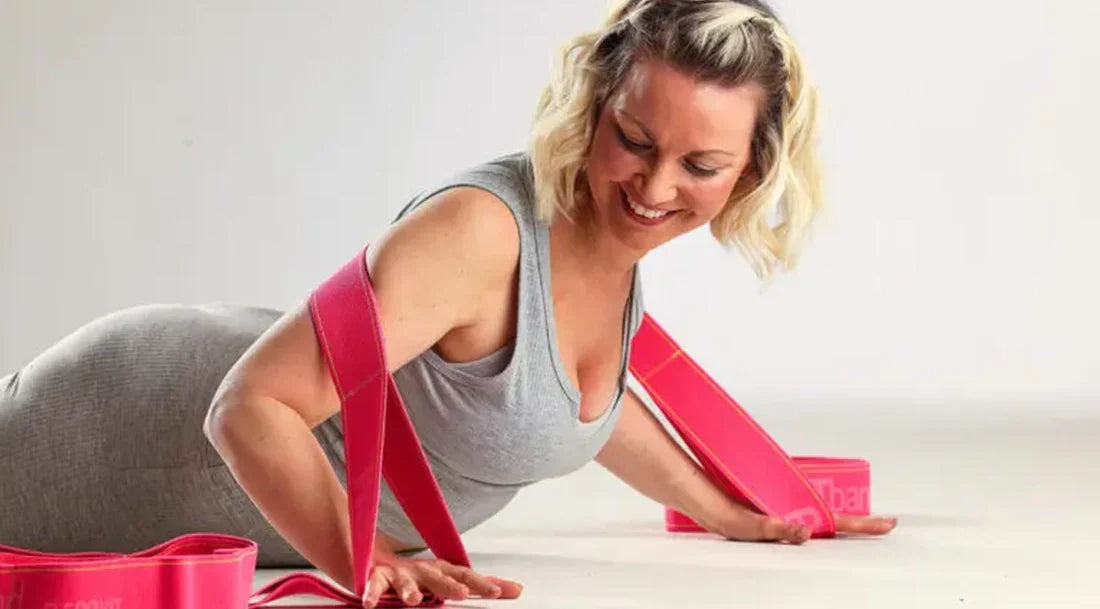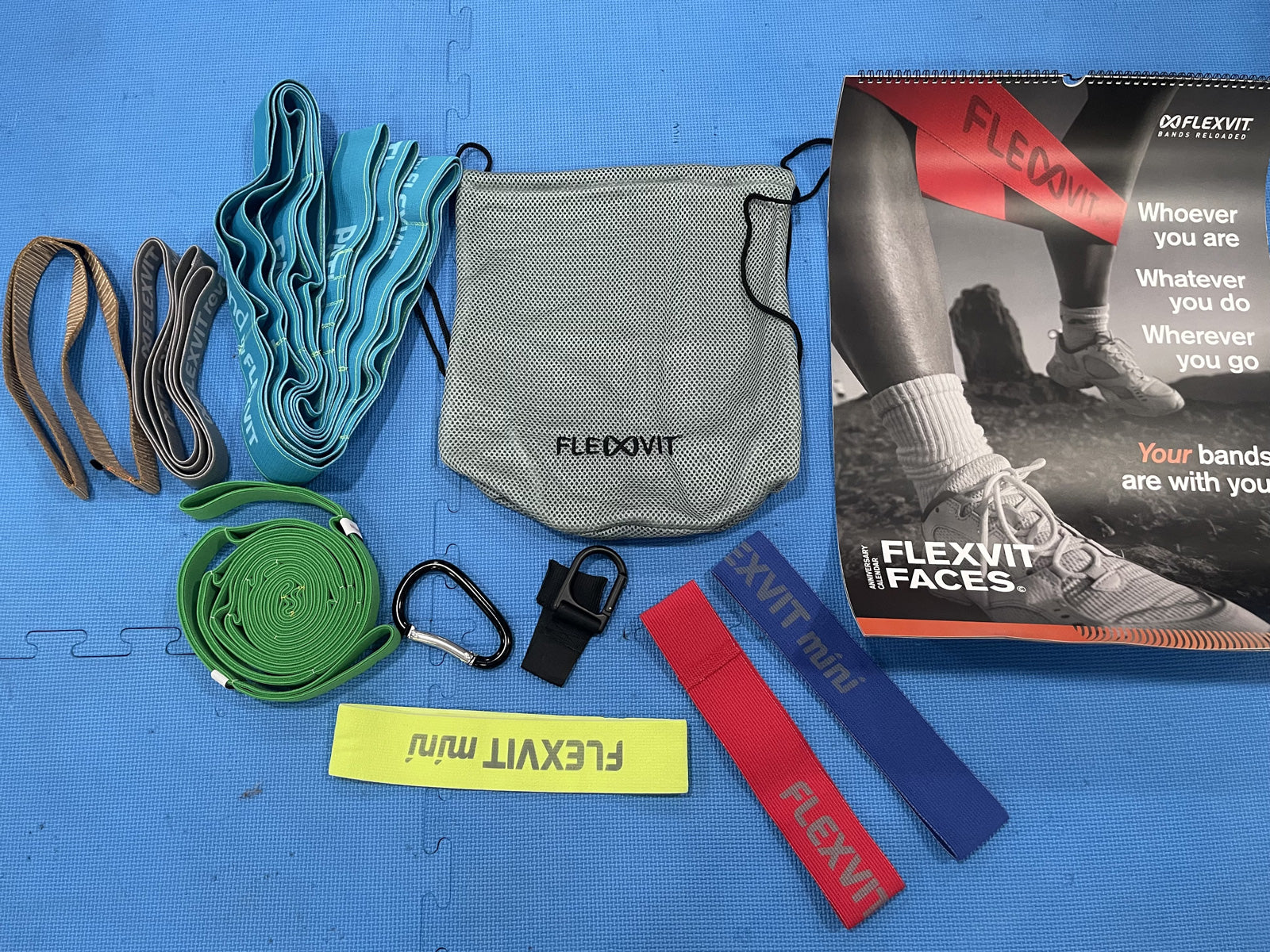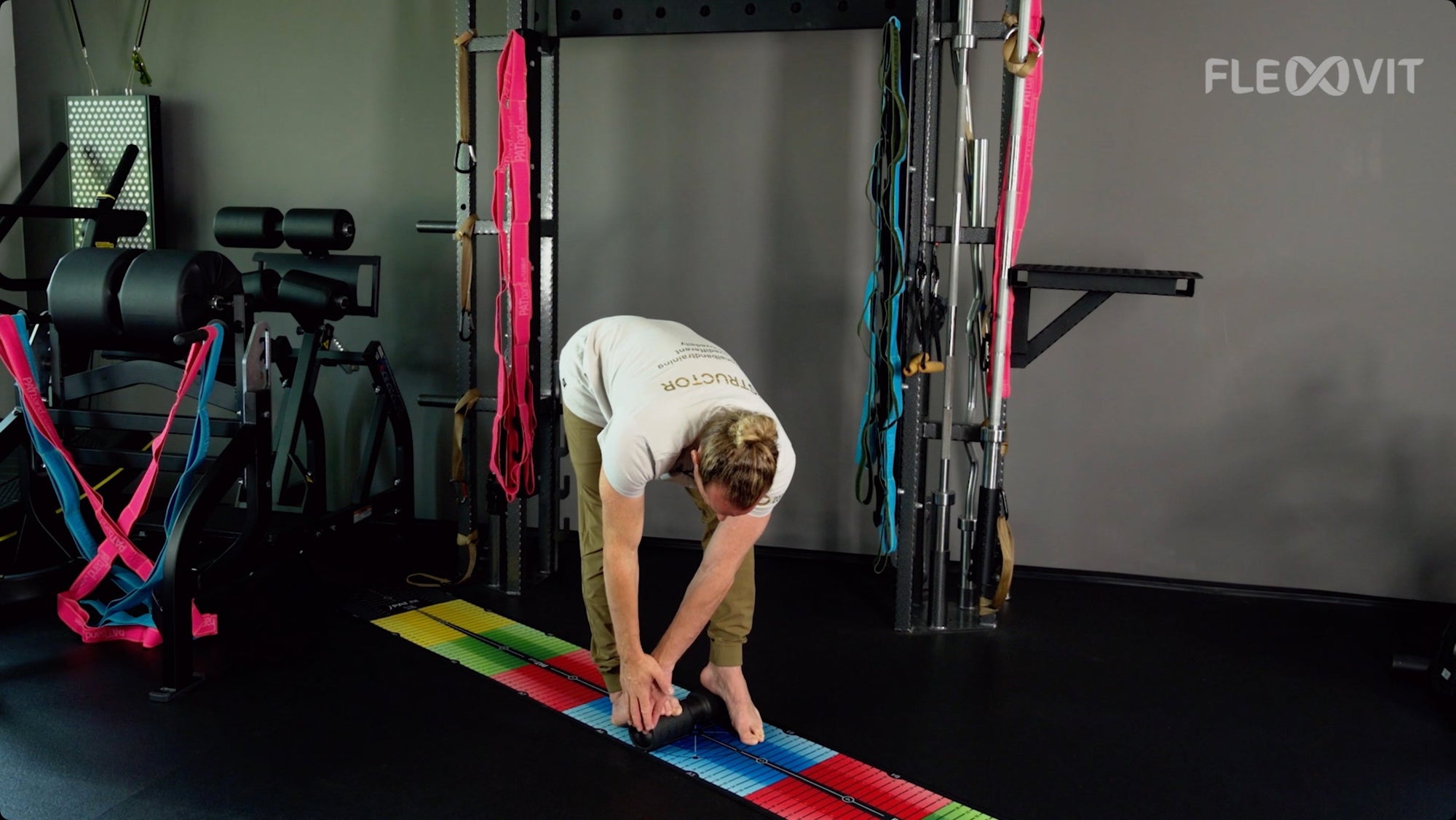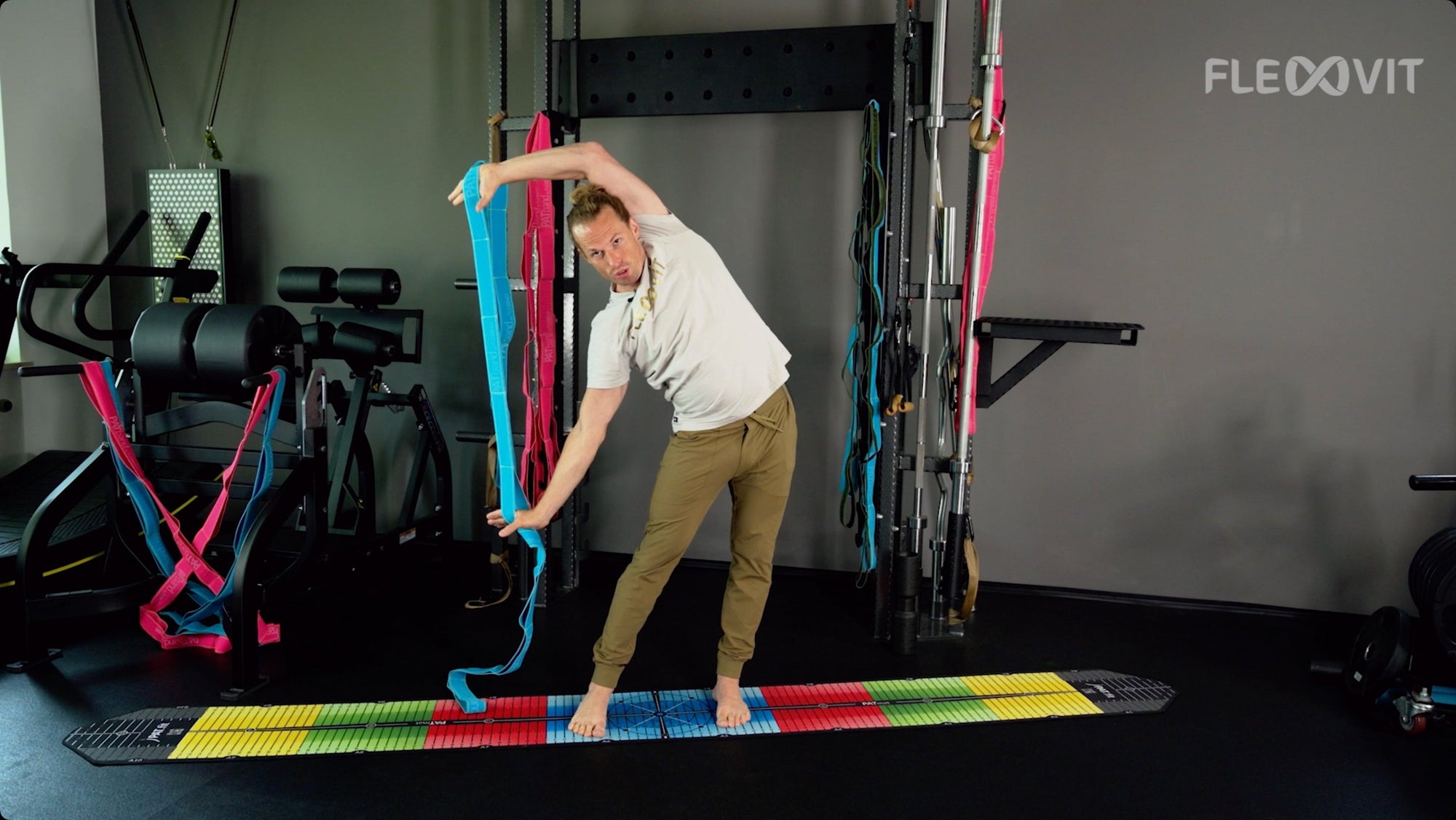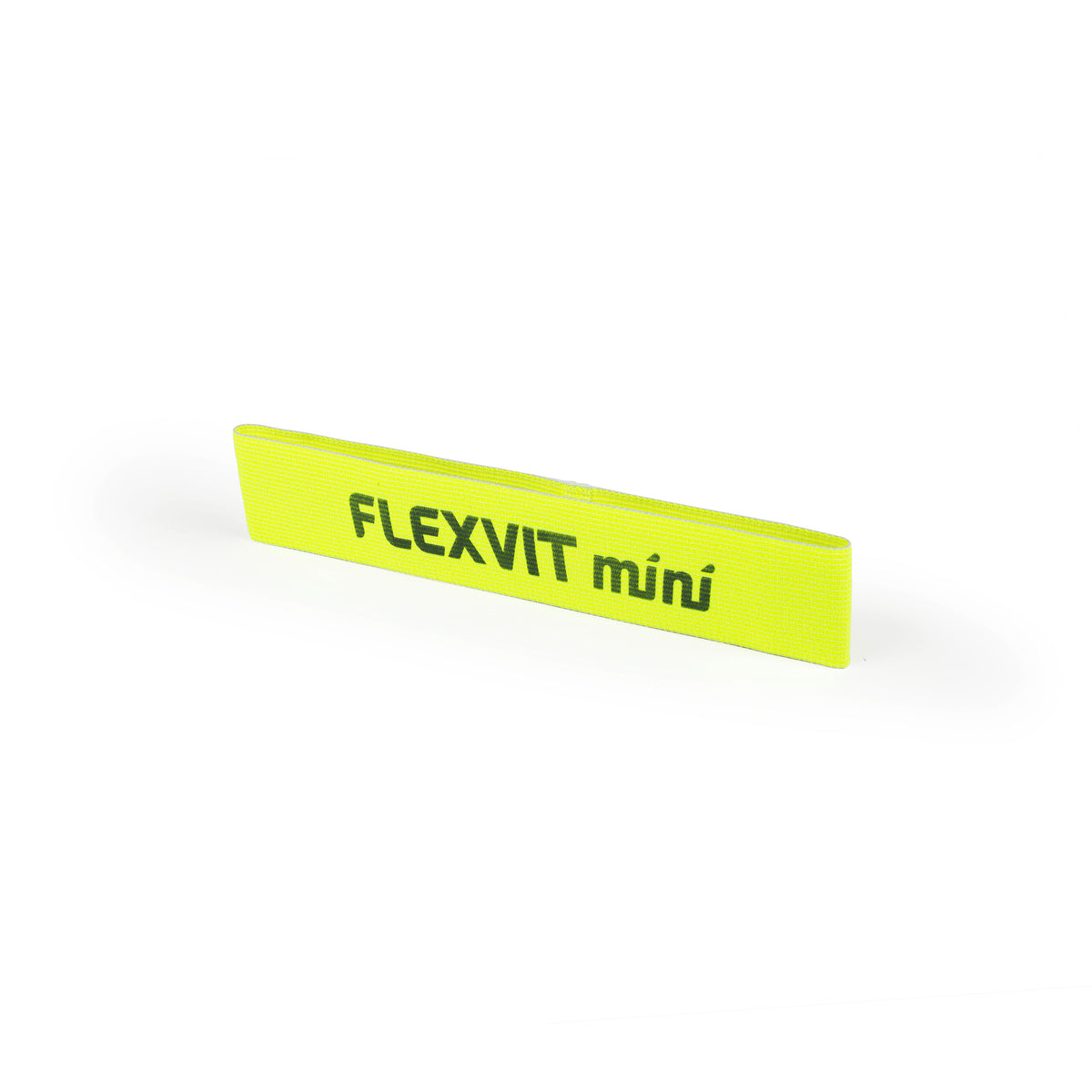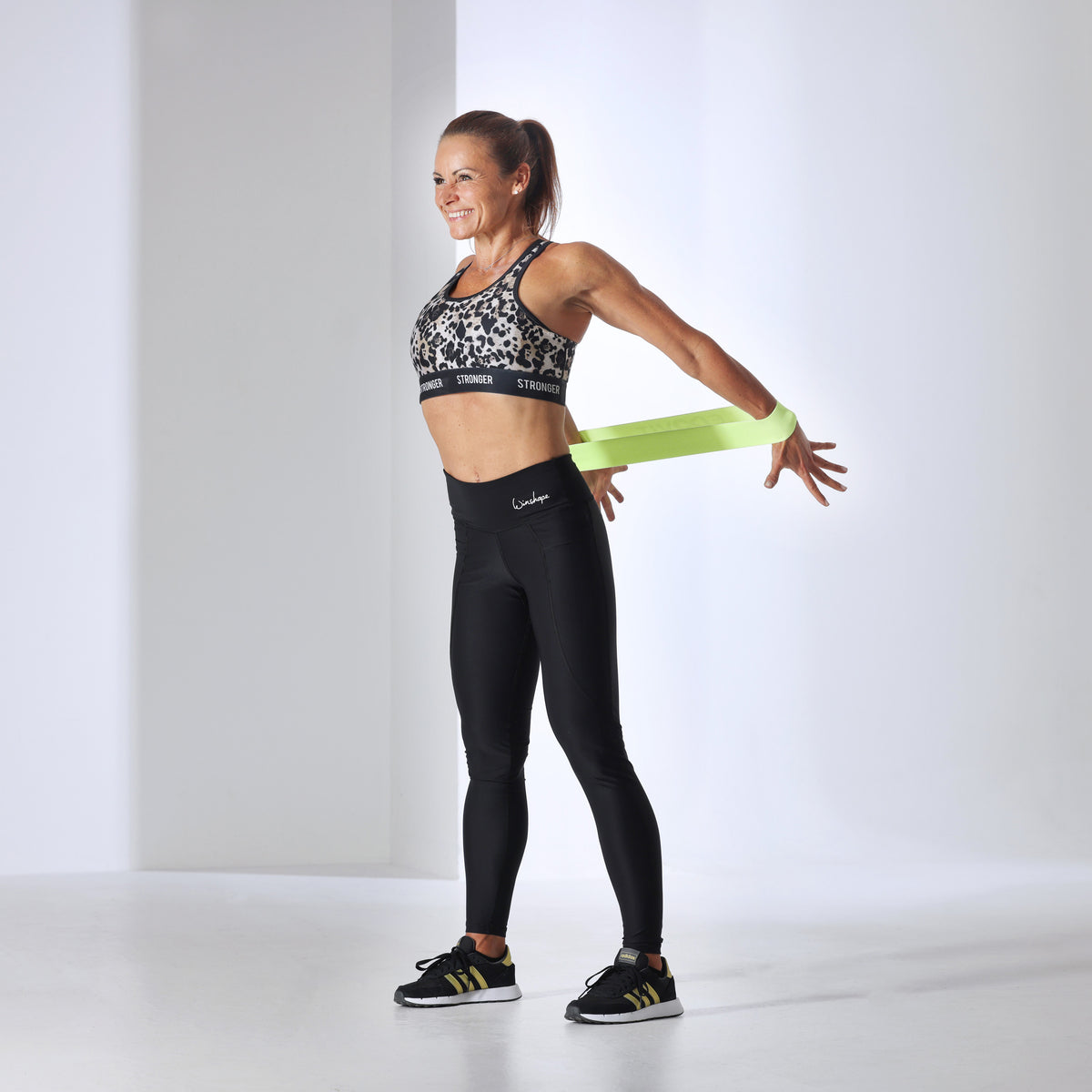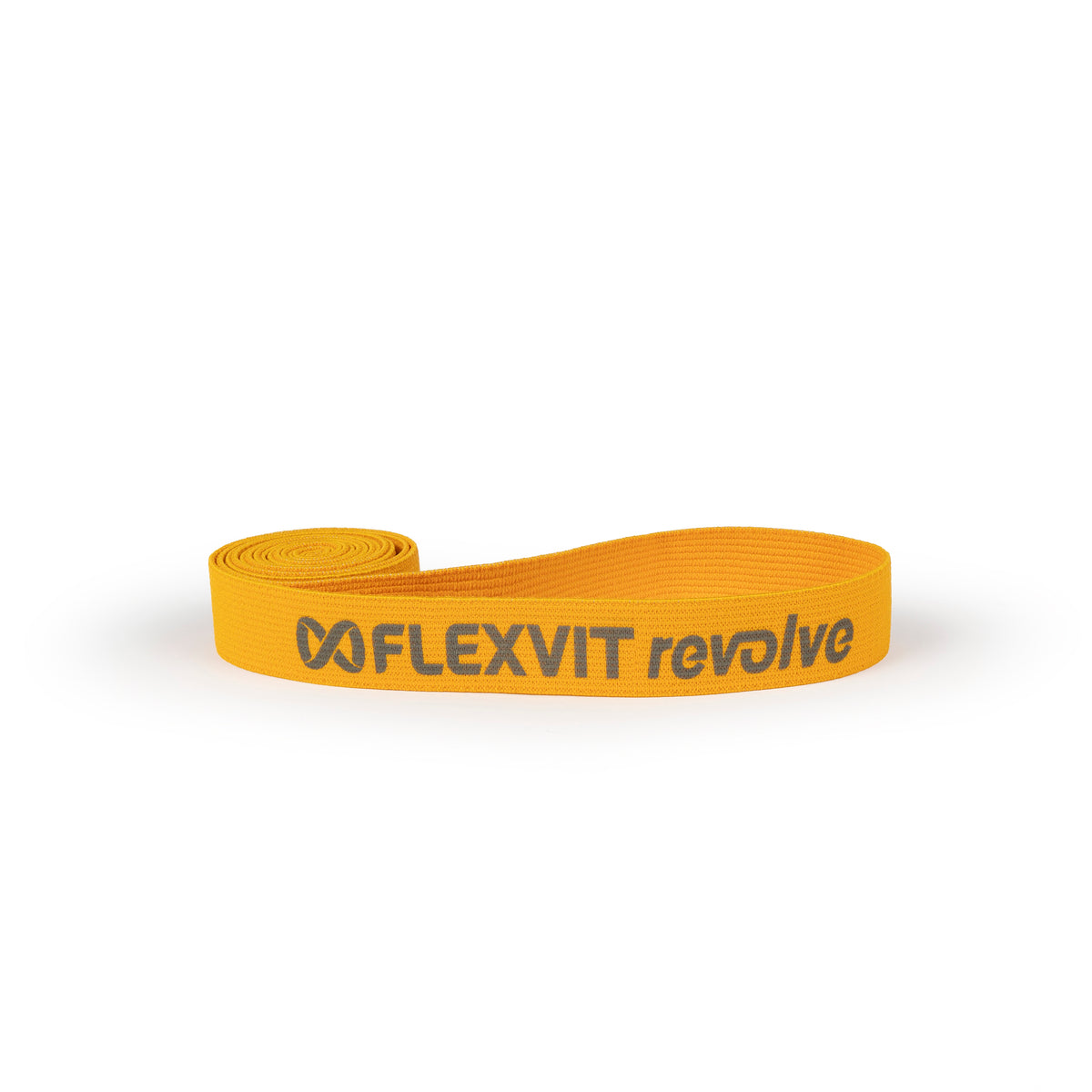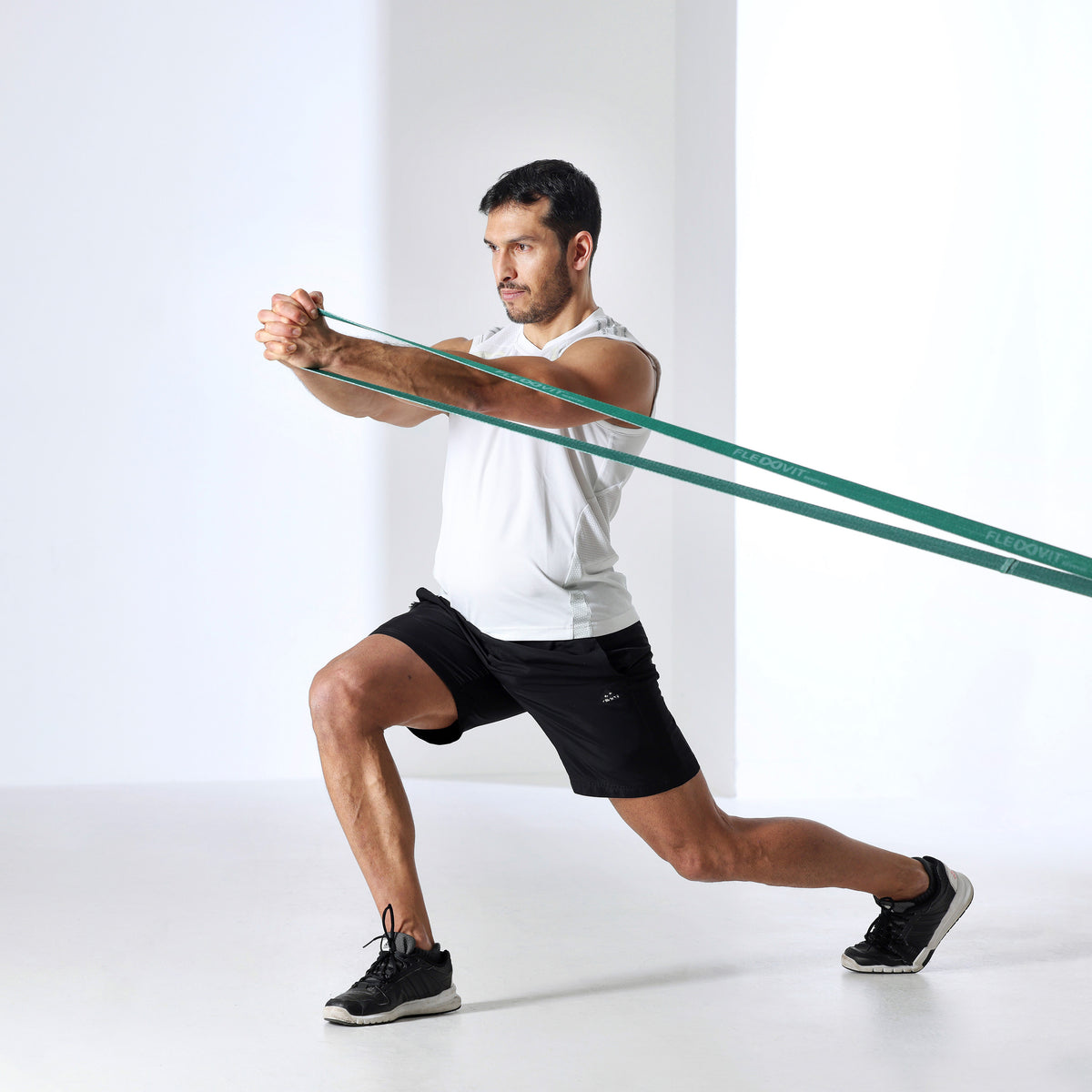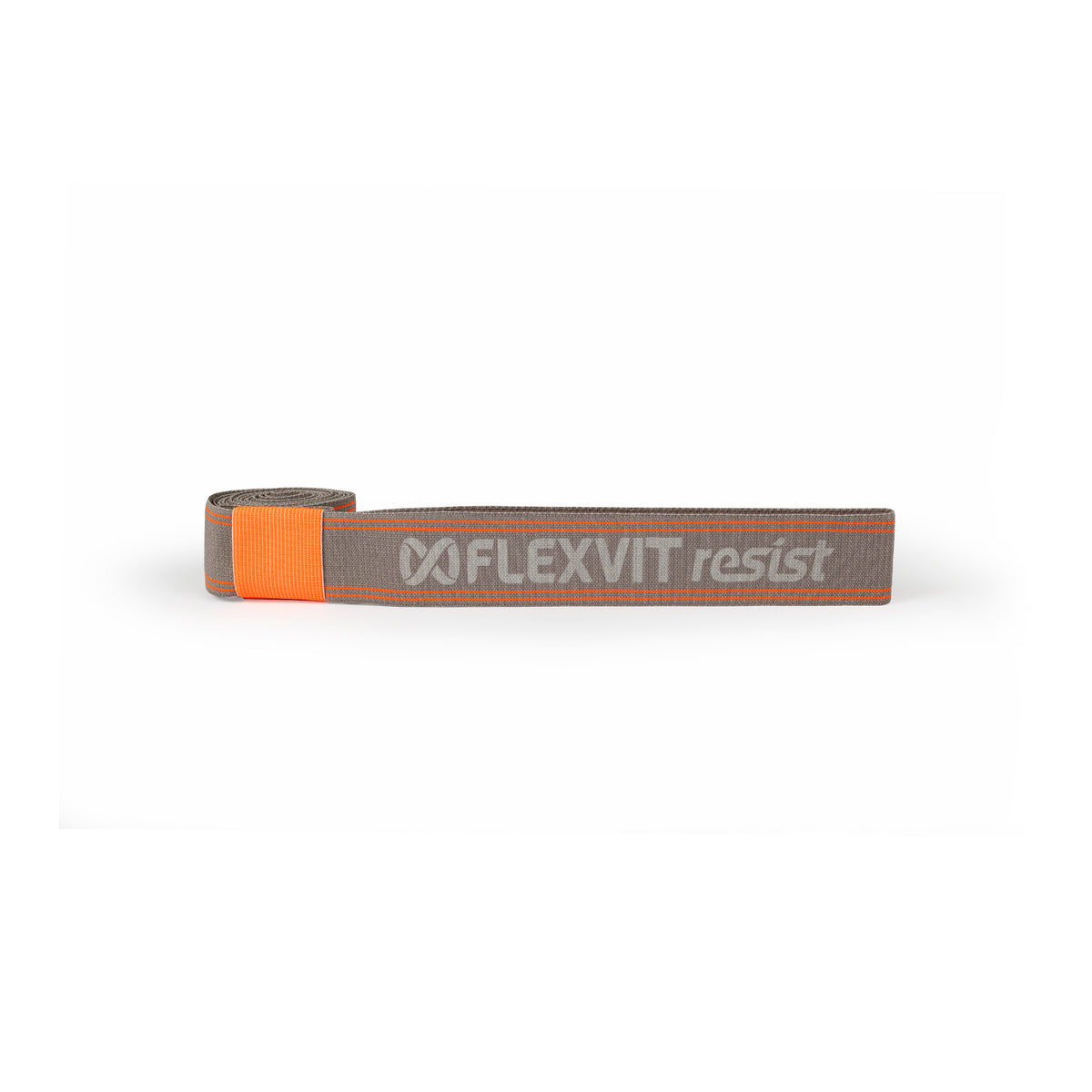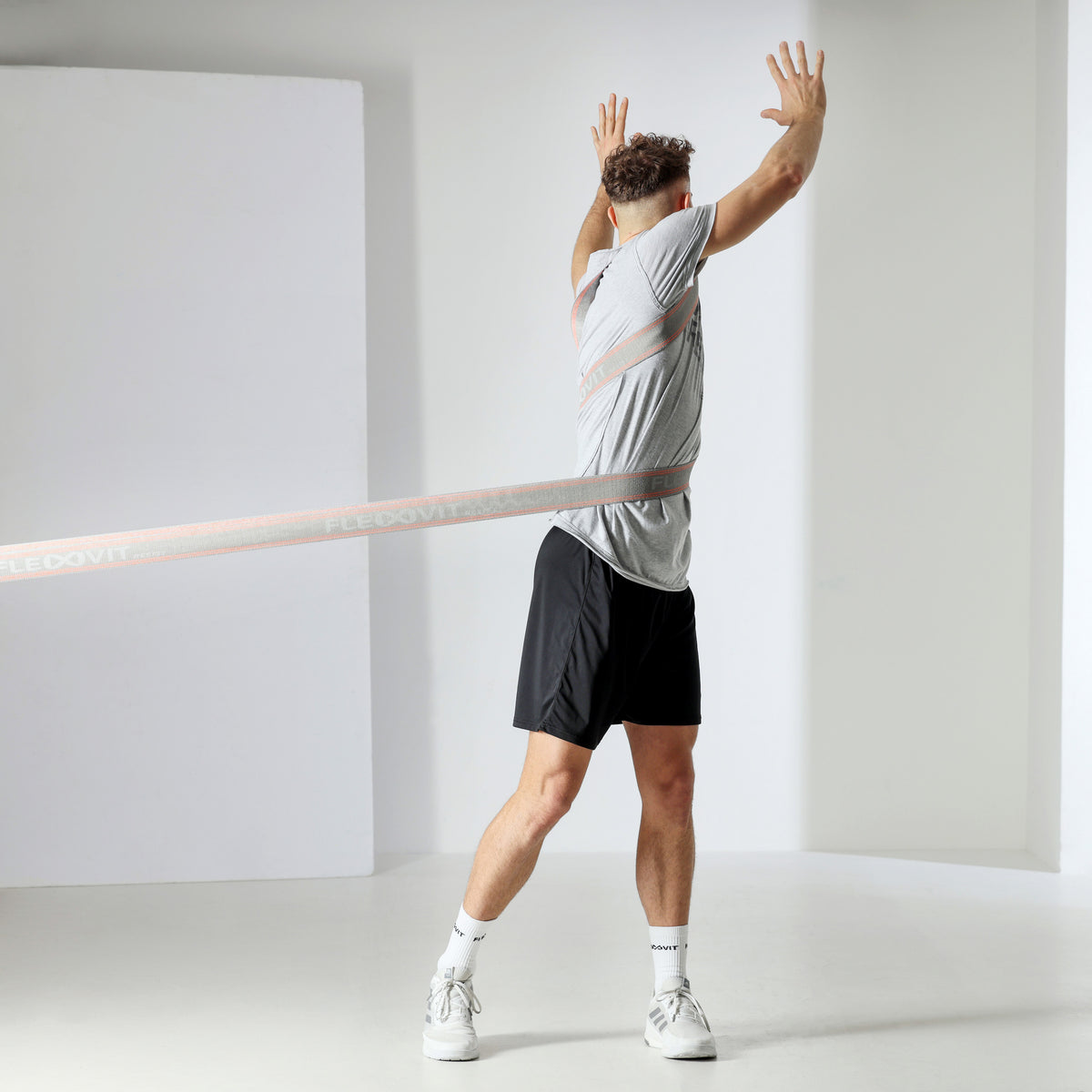What does inclusion mean and why is inclusion important in sport?
Inclusion describes the equality of a person without assuming normality. Rather, it is about adapting the framework conditions so that equal rights and participation for all people can be achieved. This diversity in adapting the framework conditions is seen as an enrichment and opportunity for everyone.
Inclusion in sport means adapting the framework conditions for movement tasks so that they can be completed successfully by everyone. Inclusion training aims to give people with disabilities access to sport and thus promote enthusiasm for a wide variety of forms of training.
Content overview:
1. FLEXVIT band training for inclusion in sport!
2. Find natural movement patterns again!
3. Functional training for people with disabilities!
4. Inclusion in sport – functional mobilization with bands!
5. Functional ground-level training forms for people with disabilities!
FLEXVIT band training for inclusion in sport!
With FLEXVIT we are committed to inclusive training and ensure that everyone can train equally with our bands. In the following article we would like to introduce you to some training exercises that are specifically aimed at improving the movement patterns of people with disabilities in everyday life.
Targeted functional training aims to ensure that natural movement patterns can be carried out and that movements can be carried out economically in everyday life. This can be best implemented with functional training and our fitness bands.
Functional training aims to learn and understand basic movement patterns, because if you analyze movements, you will find that even sport-specific movements are usually just combinations or modifications of these basic movement patterns.
Find natural movement patterns again!
Inclusion in sport – Economic movements are not purely characterized by muscular control. They also imply a body position that is as error-free as possible. This includes, for example, different joint angles, radii and general posture. In the field of sports therapy and especially when training with people with disabilities, there are additional factors that must be taken into account.
For example, movement chains can be very limited. This is relevant because the human musculoskeletal system can in principle be seen as a completely integrated movement system. We therefore speak of an entire movement unit. Every change leads to a direct movement reaction.
However, we can influence this effect in detail and, above all, take advantage of it.
Our FLEXVIT training bands support you in improving your general posture and functionally training your entire movement sequences.
Functional training for people with disabilities!
With the help of the Flexvit Resist bands, you can reduce the client's body weight to perform the exercise or provide body tension and stability. Often people with disabilities do not have sufficient muscular control to stabilize their trunk or hips. Although this functionality can certainly be achieved when standing upright, this in no way applies to their stability when walking.
Rollator users in particular tend to tilt their upper body strongly forward. In addition, it is often only “rolled” over the metatarsal or even more often over the tips of the toes. When it comes to coaching, people with special needs benefit when a tighter network of movements is provided. For example, the pelvis can be positioned correctly. With the help of the Flexvit Patband we can create external rotation in the hips and thus strengthen our leg axis. In this way, natural postures can be achieved and trained.
Inclusion in sport – functional mobilization with bands!
Experiencing or sensing is a central component in functional training. We receive feedback through receptors located on our skin, which in turn is sent to the brain. What is my position in the room, what pressure is currently being exerted, where is the resistance coming from, etc. We can provide this movement feedback to the training with the help of resistance bands.
Bands are preferably used for the upper and lower extremities, for example when mobilizing a wheelchair user. Movement impulses can then be passed on with the help of the Flexvit Chain and Resist training bands. In addition, walker users can be looked after while standing. We simply attach the resistance bands to the overhang. You have to train against gravity, while at the same time securing yourself with your hands. In this position you can then train your gait. This is an excellent way to achieve extension of all extremities.
5. Functional ground-level training forms for people with disabilities!
Inclusion in sport is particularly important for people with disabilities. Rollators and wheelchair users in particular benefit greatly from a ground-level form of training with bands. We can then coach from a stomach or back position. In addition, movements can be carried out over several joints if, for example, we train ours from the position of all fours. Accordingly, it can be optimally secured from above.
Crawling movements in particular are ideal for active training. By providing functional support to the ligaments, we can allow joints to work freely. People with disabilities have the chance to carry out a movement correctly within their capabilities and, above all, they can show what they are capable of.
Inclusion in sport – Targeted improvement of movement patterns through functional training – with FLEXVIT!

